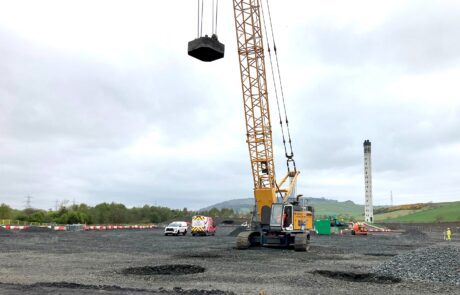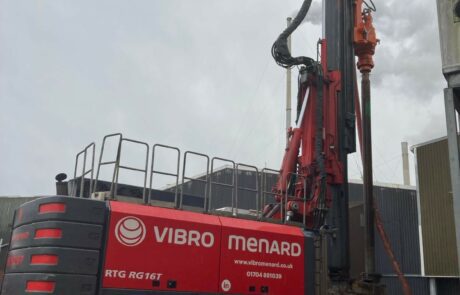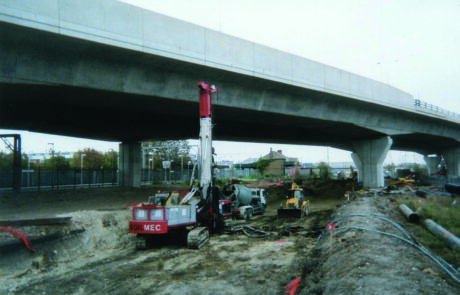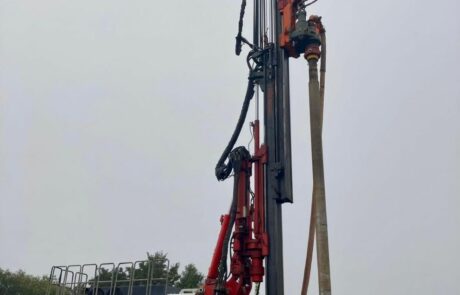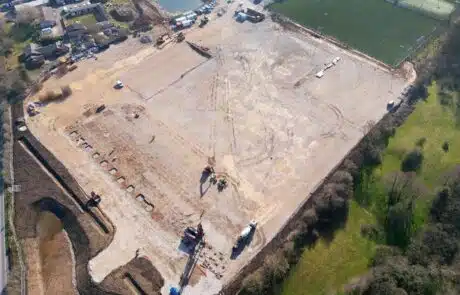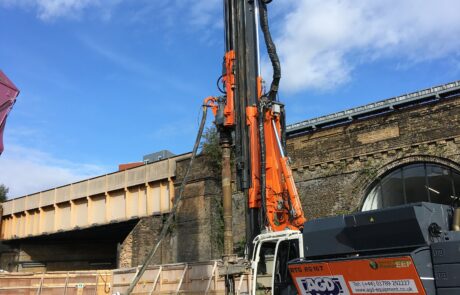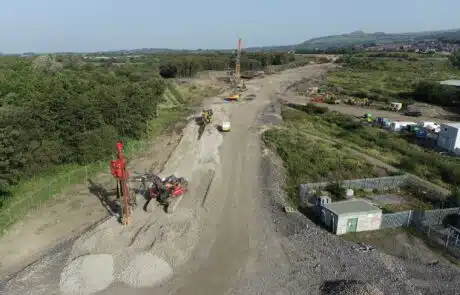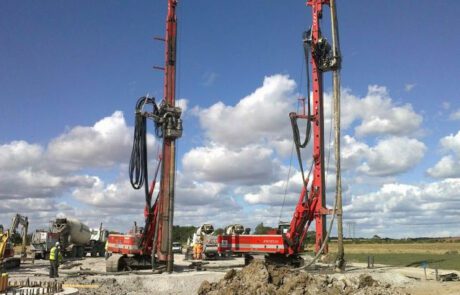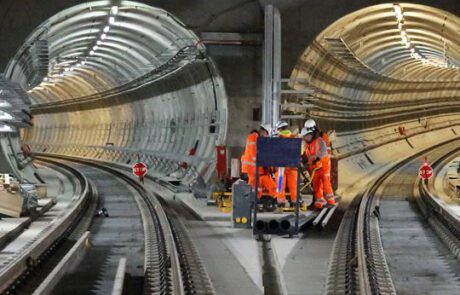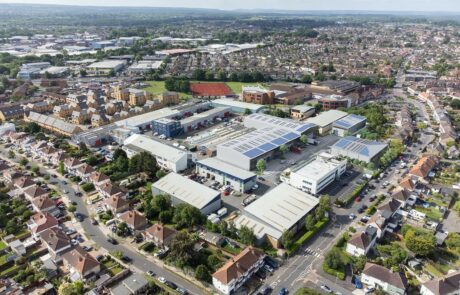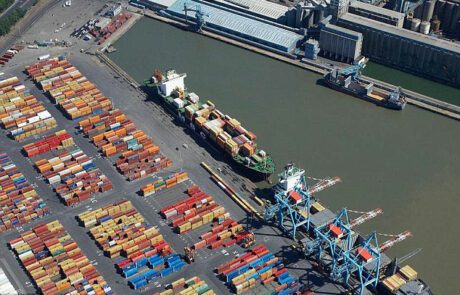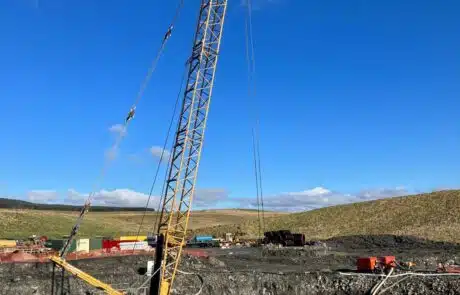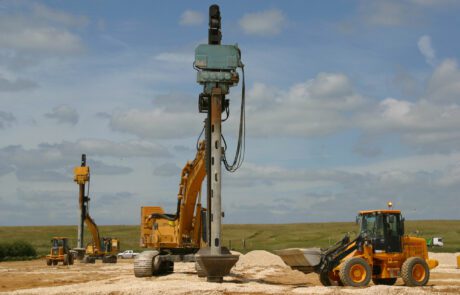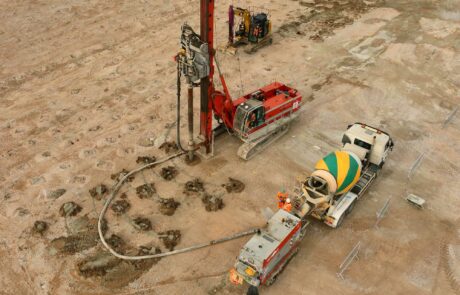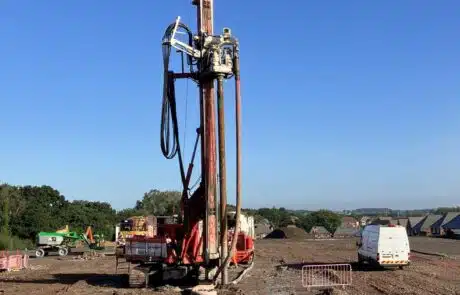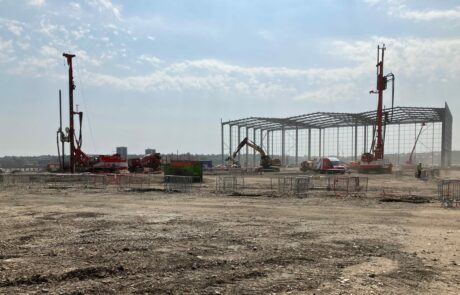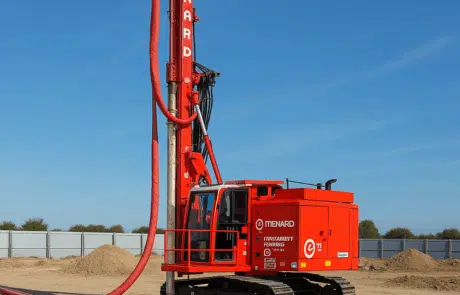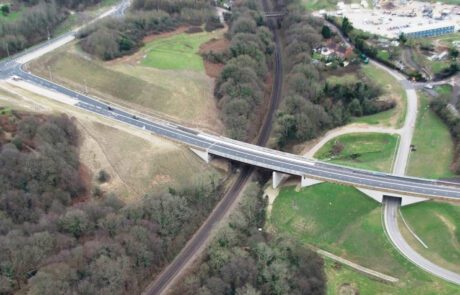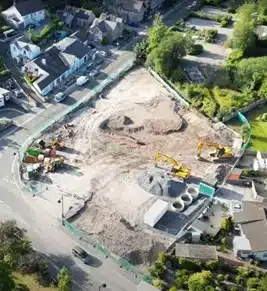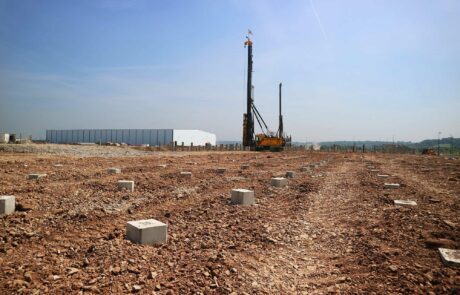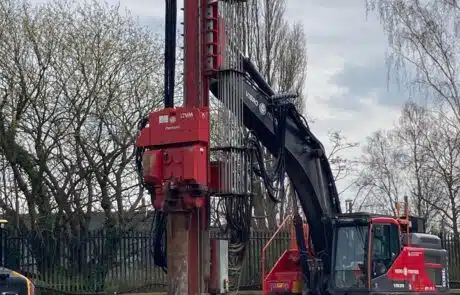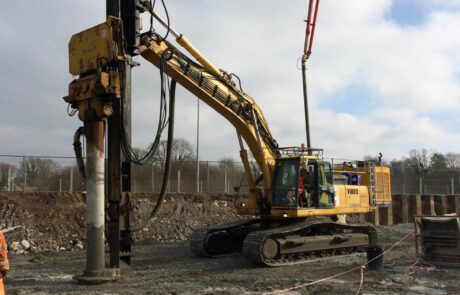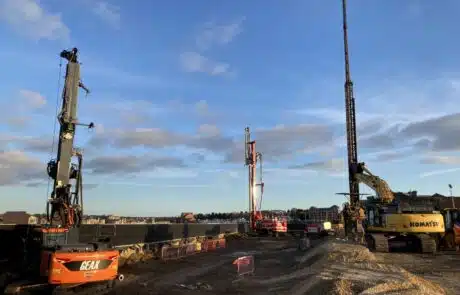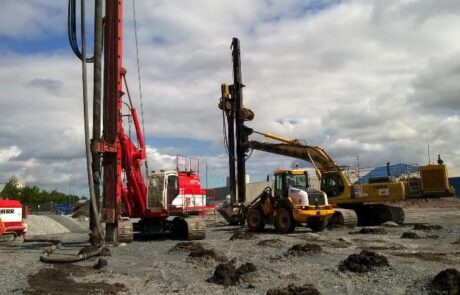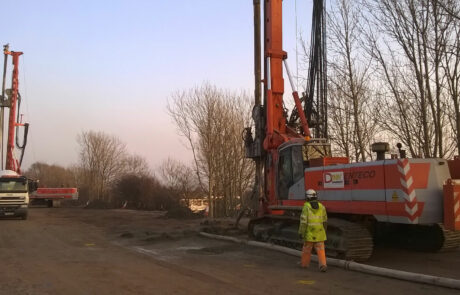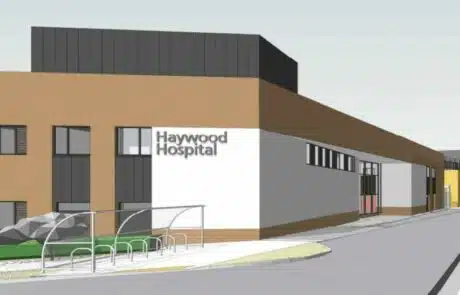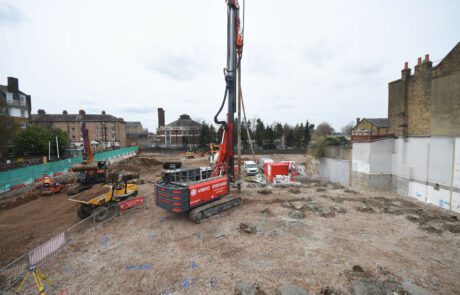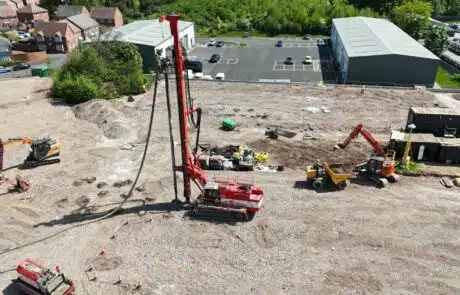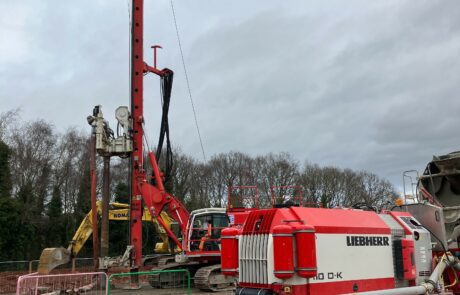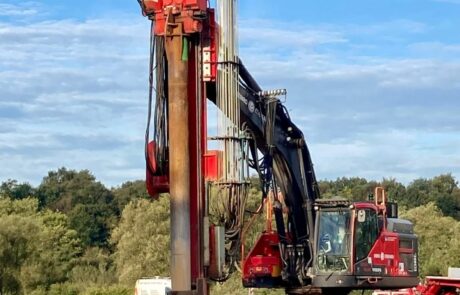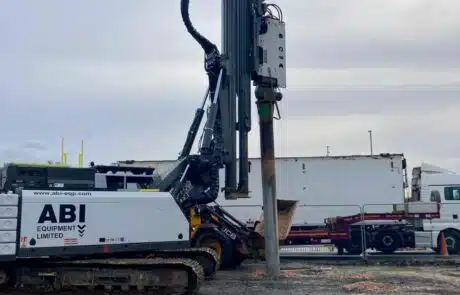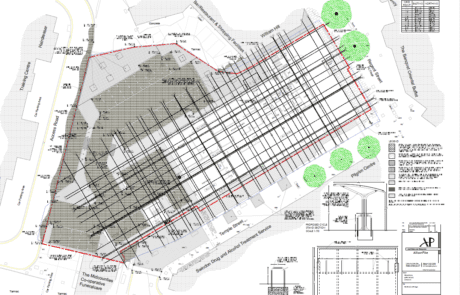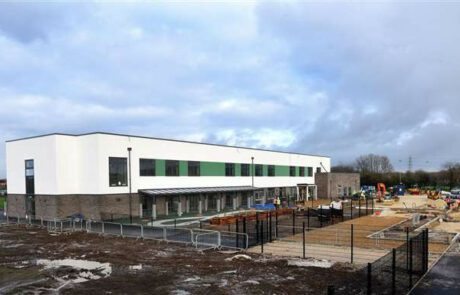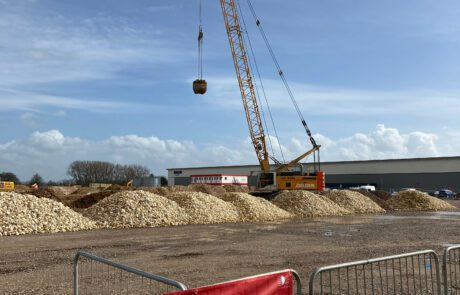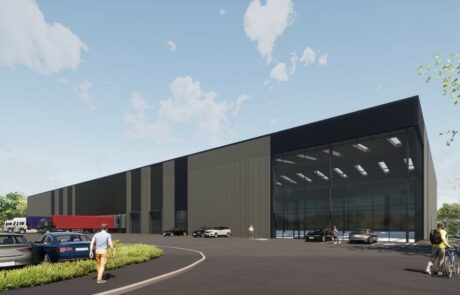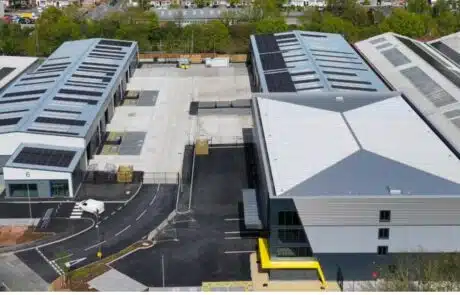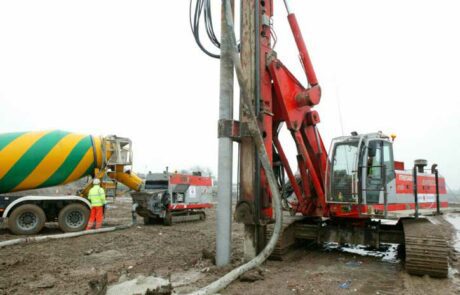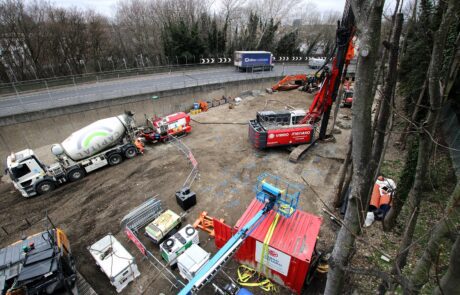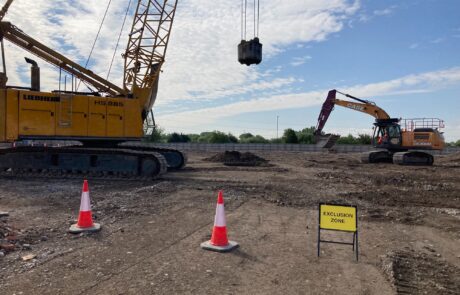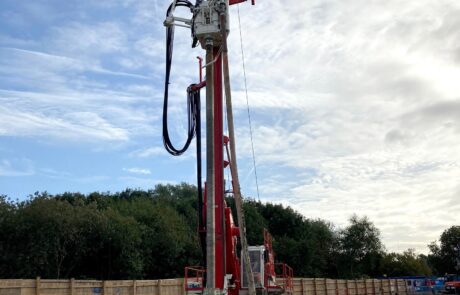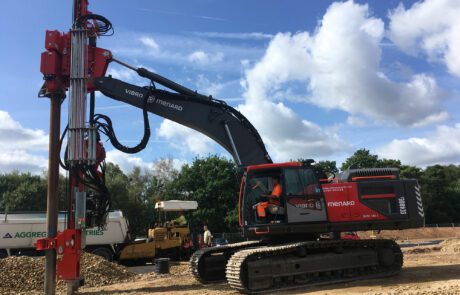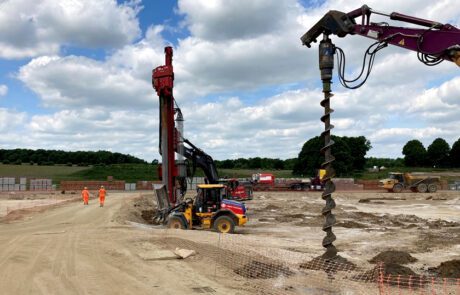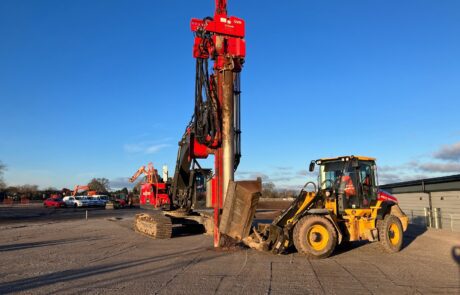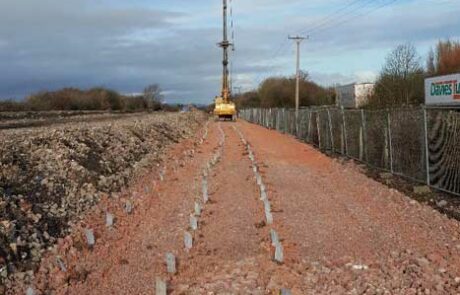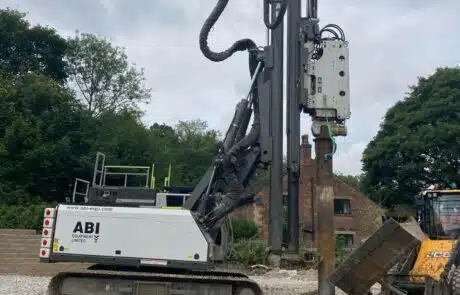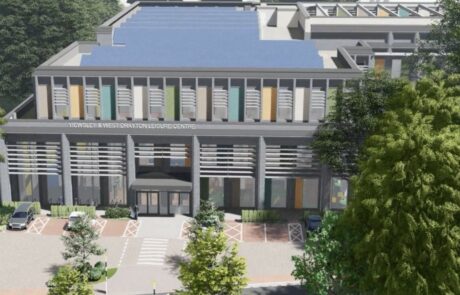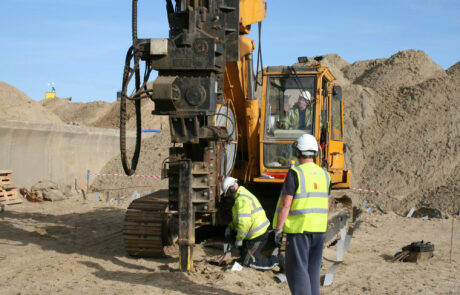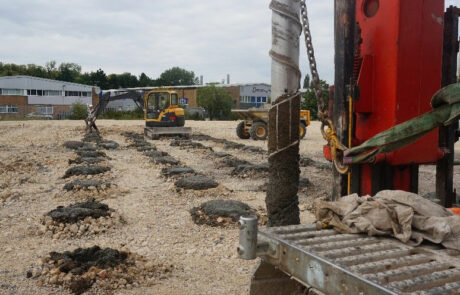OWNER:
Lidl
ENGINEER:
Jubb Consulting
GENERAL CONTRACTOR:
TSL Projects
MAIN FIGURES:
5,597 Controlled Modulus Columns, totalling 72,970 linear metres
5,235 Vertical Drains, totalling 68,055 linear metres
6 Stress Load Testing zones and 19 CMC Stress Load Testing zones
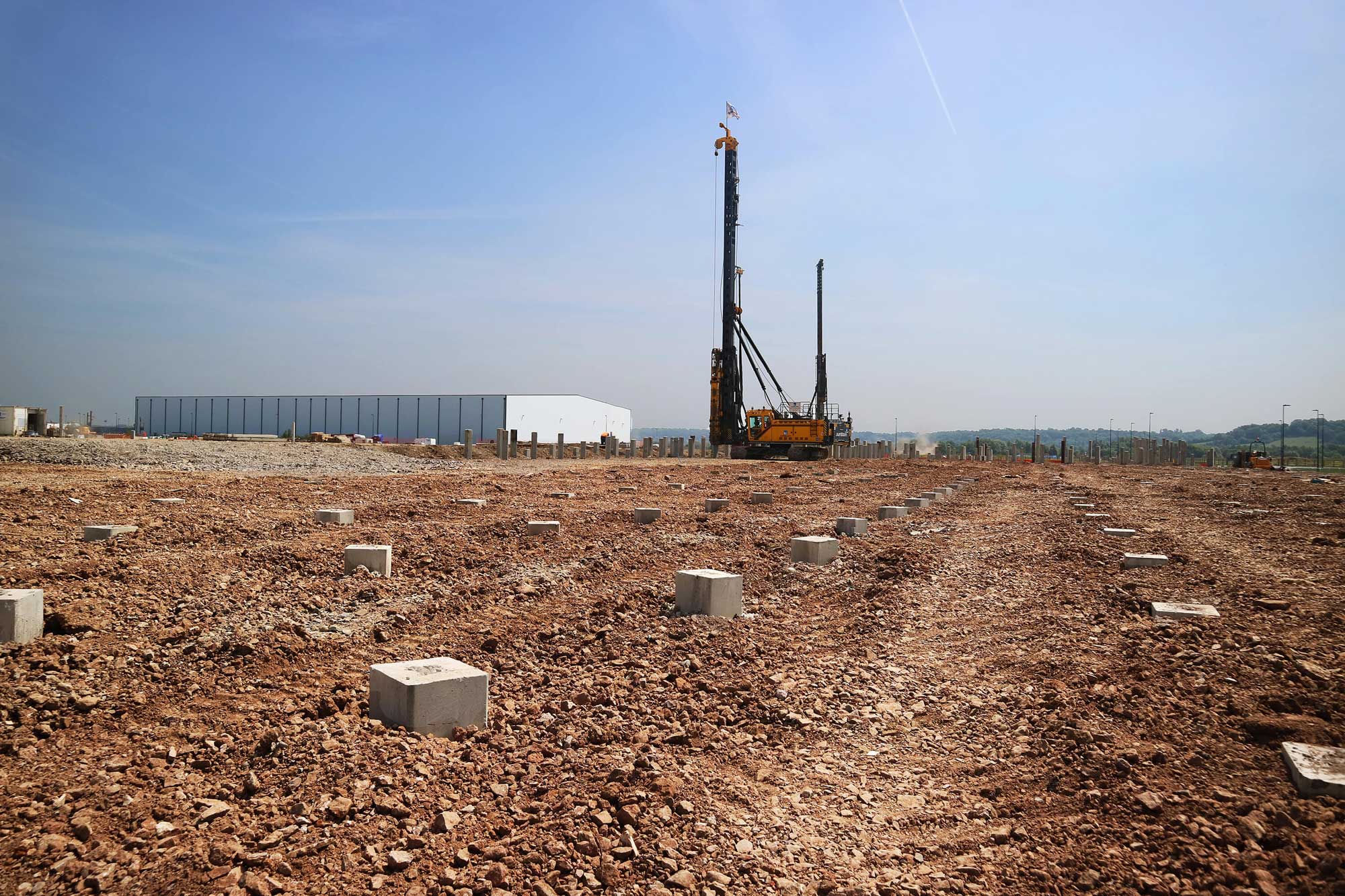
Project Details
The development was for a new regional distribution centre with associated hardstanding at the Central Park Bristol development in Avonmouth. 45,000m2 of external reinforced concrete slab area was identified for ground improvement due to the presence of weak underlying alluvium and recently placed made ground.
It was considered that the construction of a ground bearing slab with no soil improvement or replacement would result in unacceptable post construction settlements and deformations. Menard were tasked with providing a solution for the external slab areas as an alternative to a fully suspended slab on precast driven piles which would reduce post construction settlements to an acceptable level of below 25mm.
The project required a very tight working programme to allow the contractor to construct their drainage and construct the service yard to gain access around the building.
Ground Conditions
The soils comprised of 1.5 to 2.5m of made ground fill comprising of clayey gravels which had been placed in an uncontrolled manner. This made ground ran over very soft silty clays to depths of 11 to 14m with weathered mudstone / dense gravels below.
Solution
Menard provided a solution to install 5597 no. 320mm diameter Controlled Modulus Columns (CMCs) with 3 rigs on a 3m x 3m grid to support the loading of the slab and traffic loads. CMC’s were installed to depths between 11m and 15m with an anchorage into the dense gravels/mudstone of 0.5m.
5235no. Vertical Drains were also installed with 2 rigs between the CMC grid to accelerate settlements within this 2m of uncontrolled fill material at the surface ready for its handover date.
This solution allowed the client to construct a ground bearing slab above a 500mm distribution mattress of granular material between the heads of the CMCs and the underside of the slab. This saved the construction of a heavily reinforced slab and much time in cropping down precast piles.

